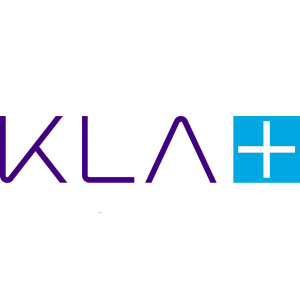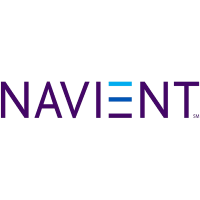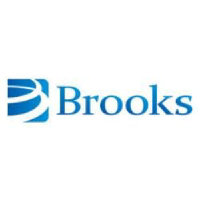
Biogaia AB
STO:BIOG B


| US |

|
Johnson & Johnson
NYSE:JNJ
|
Pharmaceuticals
|
| US |

|
Estee Lauder Companies Inc
NYSE:EL
|
Consumer products
|
| US |

|
Exxon Mobil Corp
NYSE:XOM
|
Energy
|
| US |

|
Church & Dwight Co Inc
NYSE:CHD
|
Consumer products
|
| US |

|
Pfizer Inc
NYSE:PFE
|
Pharmaceuticals
|
| US |

|
American Express Co
NYSE:AXP
|
Financial Services
|
| US |

|
Nike Inc
NYSE:NKE
|
Textiles, Apparel & Luxury Goods
|
| US |

|
Visa Inc
NYSE:V
|
Technology
|
| CN |

|
Alibaba Group Holding Ltd
NYSE:BABA
|
Retail
|
| US |

|
3M Co
NYSE:MMM
|
Industrial Conglomerates
|
| US |

|
JPMorgan Chase & Co
NYSE:JPM
|
Banking
|
| US |

|
Coca-Cola Co
NYSE:KO
|
Beverages
|
| US |

|
Target Corp
NYSE:TGT
|
Retail
|
| US |

|
Walt Disney Co
NYSE:DIS
|
Media
|
| US |

|
Mueller Industries Inc
NYSE:MLI
|
Machinery
|
| US |

|
PayPal Holdings Inc
NASDAQ:PYPL
|
Technology
|
Utilize notes to systematically review your investment decisions. By reflecting on past outcomes, you can discern effective strategies and identify those that underperformed. This continuous feedback loop enables you to adapt and refine your approach, optimizing for future success.
Each note serves as a learning point, offering insights into your decision-making processes. Over time, you'll accumulate a personalized database of knowledge, enhancing your ability to make informed decisions quickly and effectively.
With a comprehensive record of your investment history at your fingertips, you can compare current opportunities against past experiences. This not only bolsters your confidence but also ensures that each decision is grounded in a well-documented rationale.
Do you really want to delete this note?
This action cannot be undone.

| 52 Week Range |
96.2095
134.7
|
| Price Target |
|
We'll email you a reminder when the closing price reaches SEK.
Choose the stock you wish to monitor with a price alert.

|
Johnson & Johnson
NYSE:JNJ
|
US |

|
Estee Lauder Companies Inc
NYSE:EL
|
US |

|
Exxon Mobil Corp
NYSE:XOM
|
US |

|
Church & Dwight Co Inc
NYSE:CHD
|
US |

|
Pfizer Inc
NYSE:PFE
|
US |

|
American Express Co
NYSE:AXP
|
US |

|
Nike Inc
NYSE:NKE
|
US |

|
Visa Inc
NYSE:V
|
US |

|
Alibaba Group Holding Ltd
NYSE:BABA
|
CN |

|
3M Co
NYSE:MMM
|
US |

|
JPMorgan Chase & Co
NYSE:JPM
|
US |

|
Coca-Cola Co
NYSE:KO
|
US |

|
Target Corp
NYSE:TGT
|
US |

|
Walt Disney Co
NYSE:DIS
|
US |

|
Mueller Industries Inc
NYSE:MLI
|
US |

|
PayPal Holdings Inc
NASDAQ:PYPL
|
US |
This alert will be permanently deleted.
 Biogaia AB
Biogaia AB


















 You don't have any saved screeners yet
You don't have any saved screeners yet

Welcome to BioGaia Q2 Conference Call for 2023. [Operator Instructions] Now I will hand the conference over to CEO, Isabelle Ducellier. Please go ahead.
Thank you, and good morning, everybody, for this interim management statement Q2 2023.
So as an executive summary, just to point out the -- outline the main results in terms of sales with SEK 315 million for the quarter 2. We can show a growth of 9%, 2% being organic and the rest currency effects driven by a strong growth in Americas, a slight decrease in Europe and relative growth in APAC, and I will come back to that later.
Regarding the EBIT, it's a bit under the -- last year at minus 6% at SEK 95 million, but we maintained an EBIT margin of 30%.
Starting with the key events. I would like to emphasize on the third press release we published on the 5th of July informing the market about a very interesting clinical study. We've been running with Orebro University here in Sweden, and the purpose was to see if while you are vaccinated if you are as well on our main trend, Protectis with Vitamin D, that might have an impact on the production of antibodies. And the results were extremely interesting and you could even say that Protectis plus vitamin D as a kind of vaccine booster effect. So if you have been vaccinated against COVID, you are better protected than someone -- and you're on probiotics, you are better protected than someone just on vaccination.
So that was a very interesting study that we published. Regarding the launches, I just would like to emphasize on Egypt Minapharm because we've signed a contract with Egypt for 2 years now, but it's a very complex market in terms of regulation. So it took about 2 years to get the drops registrated officially. And we have extremely good partner with Minapharm. They are really good in pharma and very interesting by the drops for babies. So nice demography, a big market in that part of the region, nice economy. So we are kind of interested by looking at Egypt in the coming years.
About Paraguay, a small market, though, but still with Abbott, our main distributor in Latin America. And here, it's really to complete the success story on Gastrus. We've been really focusing on Gastrus in that part of the region with Abbott with the gastroenterology association there. And the fact that we have a Chief Scientific Officer from Uruguay, I have to admit helped a bit as well to get a better coverage.
Now moving to sales per segment. As I mentioned in the executive summary, we have an increase for the quarter of 9%, which is an organic growth of 2%, you might say only. Looking at the H1 through the 6 first months of the year, we are able to demonstrate an increase by 19%, and out of that, 11% were organic. So -- and that's what we were expecting. We knew that Q1 was extremely strong with some one-off effect of order ending there, they should have been in Q2. So that's on line with what we thought.
What we didn't expect though is this plus 53% increase on Adult for the quarter, indeed, from a lower volume, but still SEK 83 million. And it's due to 2 products, the first one being the Protectis tablets for adults, mainly thanks to the fact that with our distributor in South Africa has been acquired by a bigger one called [indiscernible] and we've been relaunching the Protectis tablet there with [indiscernible] details force, and they accepted for the first time of our history to have their brand co-branding with BioGaia. And here, we do think that the impact of having their brand [indiscernible] which is well known, sold everywhere in every pharmacy plus the international impact of BioGaia branding is generating a good impact.
The second reason for the Protectis tablet increase is in Hong Kong. But here, it's mainly post-COVID release restriction impact. What is extremely interesting to notice as well for the adult is Prodentis. As you might know, I am a very strong believer in oral health. Our main market is Japan. But in Japan, we're really working hard on -- from having 100% of our business in dental clinic, we wanted to transform this product into a consumer product as well. And we have had now a couple of influencers that picked up on Prodentis, female -- young female influencers recommending their friends to take Prodentis, were dating out. And that has had an impact on our sales on Amazon at a very high level. And the influencer here, I mean, they have like 19 million followers for one, 8 million for another. And we could see immediately after very peak of sales on Amazon. So I'm very happy about the results of Prodentis in Japan.
And even more happy with the impact in the U.S. Here, we really last year decided to focus on oral health with our own distributing company, BioGaia USA. So we've decided to attend a lot of dental congresses all around the country plus activating a very big campaign with influencers and helping the sales on Amazon.
And this double, I mean, medical plus consumer marketing approach paid back in the U.S. as well on Prodentis, so very happy about that.
Moving to the sales per region. Yes. Indeed, EMEA has decreased with 1%. We had a fantastic year last year with -- in Europe, we had ended the year at plus 52%. That was mainly because of the COVID release here as well. The stock were empty. So the distributors have been ordering massively. The demand was there, but not -- I mean we have a bit of stock at the end of the year and mainly in France and Italy, and that shows now in Q1 and Q2, where the demand is okay. Even in Italy, we see the sell-out being, by far, higher than last year. But the fact that they ordered so much in last year shows in the 2023 figures.
If we look at APAC here, I don't think we should focus very much on the quarter. It's only 3% increase. But if you look at H1, it's plus 33%. And I've been really focusing on APAC since I started traveling extensively. And I mean, what I see -- I can tell you, APAC is just the beginning. So the 3% doesn't reflect the reality. We have very strong economy like in Korea, very open to probiotics, fantastic new distributor. We have our Chinese partner, extremely agile online as well with high potential still to grow. And then even just in terms of demography, Europe is not doing any more babies. I mean Vietnam are still doing a lot, 3 children per woman. In Indonesia, I mean, the population is increasing very fast as well. So that will help us a lot to develop our sales in APAC.
And then Americas, we are so happy to have forward integrated varieties in our figures because what they do is amazing. Very strong sales, again, on Amazon. Very strong sale on IERPs. So very happy about the U.S.
Canada. So we created our own company, as you know, in January this year. We have a fantastic team coming from Ferring, our ex-distributor. So they know the business perfectly, and they are over delivering on a very ambitious plan already. So Canada being under BioGaia brand name is -- and I mean our own responsibility, was a very good decision.
For Mexico, it's an Abbott country. And here, the market is just working very well. Abbott Mexico is a major player in pharma and that shows as well. They just came last week to visit [indiscernible] in the south of Sweden.
Moving to the gross margin per segment. Pretty stable, slightly better than last year. I mean we have to take into consideration the cost increase that is happening at all levels. And we've passed 2 price increases, one last year, with full implementation in January this year. And we have done a new one, it will have full impact as from August this year. So when it will be needed, we will continue with the price increase, and therefore, we have been able to manage to maintain a very high gross margin.
Moving to the financial, Alex, I will pass you the word. Alex? Hello?
Yes, sorry for that. So to summarize the second quarter then. As we heard, we had sales of SEK 315 million versus SEK 288 million 1 year ago, which was then a growth of 9%.
If we look at our EBIT, we had an EBIT of SEK 95 million versus SEK 101 million 1 year ago, which is then 6% lower compared to 1 year ago; and a margin of 30% compared to 35% a year ago. And earnings per share SEK 0.8 versus SEK 0.78 1 year ago.
If we move on to the sales then, as we heard previously, we had a growth of 9%, which is then SEK 27 million, of which SEK 20 million or 7% was currency and organic growth at 2%, which then, as we have heard, it's, of course, lower than what we normally have. But if we then look at the year-to-date figures, we will see that the organic growth is 11%.
Moving on to operating expenses. Our operating expenses increased with 26%. There are several explanations to this. So if we start with the sales cost, sales cost increased basically as an effect of the increased sales and increased marketing activities that we are performing. For example, we have a subsidiary in the U.S. and as they increase their sales and grow, the costs there will grow.
Looking then at R&D, you see that this line item also increased. And the main reason is increased costs for clinical studies. So for example, 1 year ago the clinical studies that we performed were at a much lower level, which was then due to the effects of coming out -- or still being in COVID last year. So it is a natural increase in spending in R&D. And it's also a higher cost in this quarter compared to the previous quarter, and we tried to explain that in the previous quarter that we saw exceptionally low costs earlier. So we are coming back to more normalized levels of spending in R&D, but we will continue to see a bit lumpiness, of course, due to clinical studies and so on.
Admin costs increased due to some one-off costs that we have -- still have for terminating our Lund office as we are moving into Eslov,where we have manufacturing facilities and consolidating.
And then we have the line called other OpEx, which was SEK 8.5 million versus SEK 14.2 million 1 year ago. This was a negative cost, a positive effect on the P&L, so to speak, and that positive effect is lower this year compared to 1 year ago.
If we then move over to the P&L. This is basically just a summary of what we have said previously. Sales at SEK 315 million versus SEK 288 million and an EBIT of SEK 95 million versus SEK 101 million 1 year ago. And a margin of 30% versus 35%.
Looking also year-to-date, we have total revenues of SEK 681 million and an EBIT of SEK 243 million, and the EBIT margin then of 36% on both adjusted and non-adjusted basis, which is then obviously above our financial targets. So year-to-date, a very strong profit.
We move on to the cash flow. We see that we have a cash flow from operating activities that increased with 20% to SEK 105 million versus SEK 87 million 1 year ago. This is due to increased interest income on our cash and improved positive changes in working capital.
And then for the quarter then, the total cash flow for the quarter was minus SEK 216 million versus SEK minus 225 million 1 year ago. And there is obviously the result. Obviously, the reason for this low or negative cash flow is that we have a negative cash flow from -- in the financing activities where we have the dividends that we paid out in the quarter.
And with that, I can move on to the balance sheet. I will not go through this. This is just for reference. So with this, I hand over to Isabelle for concluding remarks.
Thank you, Alex. And as a conclusion, we have a Q2 at plus 9% in sales and after Q1 at plus 20%. So we ended up with a first half at a very satisfactory plus 19%. And indeed, EMEA has slowed down after an exceptional year '22, but America is really strong at plus 35% and APAC for the H1 at plus 33%.
So basically, I think this result support the continuation of our strategy that we initiated in 2019 to build a global probiotic brand the family. So Paediatrics, which has increased by 18% for H1 and Adult plus 21% in H1, through an omnichannel route to market, which was kind of new for us. We were coming from route to market mainly towards pharmacy. And now the digital global online player, the e-pharmacy are really starting to play key roles mainly in the markets where we collaborate with Amazon. So now we work on Amazon in the U.S., of course; in Canada. We have a very nice development in Germany, in Japan. In Sweden, it's very low, but I think the problem is not really us in Sweden on Amazon. It's a bit more Amazon in Sweden. So very satisfactory development on this omnichannel strategy.
And we basically changed a bit of way of working. We never compromise at science. That's something which is extremely important for us, but we've been much more consumer-centric in our approach to listen to the consumer, base our decision on consumer insight in order to come up with the product and the campaign they are looking for. On top of that, here as well from having 100% almost partner route-to-market approach, we've as well established ourselves in 6 markets. So the U.S., U.K., Canada, Japan, Finland and Sweden. And these 6 markets are overperforming compared to the rest. And we have a better control. We can roll out our old portfolio. If not, partner have a tendency to sell what is easy to sell, namely, the drops, but they are a bit more reluctant to start to really work hard and launch the rest of our portfolio.
So like the U.S., I mean we say now it's key. You have to answer all else, we focus on that and it delivers.
So that's my last report as CEO of BioGaia. So I would like to take that opportunity to thank you for listening to me every quarter. Thank you for the trust in the company. I had 5 fantastic years. I'm very happy about what we've been doing with all the -- what I call the BioGaians working there. And I'm now open for questions.
[Operator Instructions] The next question comes from Mattias Haggblom from Handelsbanken. Please go ahead.
Mattias Haggblom from Handelsbanken. So firstly, with regards to the strength in Adult Health, growth shown in all 3 regions, and you spoke of some of the dynamics behind the strength, including some of the campaigns and change of some distributor dynamics.
But I'm curious if it's possible to tease out any large one-off orders for Adult Health or, let's say, of more nonrecurring nature vis-a-vis growth that is more durable to help us understand the strength of this quarter for Adult Health.
And then secondly, Alex spoke to the sharp uptick in R&D costs during Q2 after a slow Q1. I'm still curious to help us think about the R&D cost for the coming quarters. Alex said something about fluctuations expected going forward. So any color there would be helpful.
Okay. Thank you for your questions. Regarding the Adult, I will not comment again on Prodentis. I think Prodentis is really a key driver of growth for the future. If you look at oral health in probiotic is starting, we were the first one, but even probably now with their investment in [ Bliss ] looking at it. We have the best clinically proven strength in oral health. Consumers are starting to understand that, indeed, you can work on your oral hygiene with probiotics and the general improvement of your health, thanks to having a good oral hygiene, very well [indiscernible] So it's a matter of [indiscernible] But we have the answer. The day the consumer really pick up on that, that it works. I think we are very well positioned with Prodentis. So it's not a one-off effect. It's something that is to stay.
And on top of that now, we had only the Adult Prodentis. Now we have the Prodentis for the pregnant women. We have Protectis for kids. We will have as well a Prodentis for baby when they are teething. So see the full offer for the whole family. So that's the one -- the first thing.
Regarding then the second one, which I think is a long term and despite a very slow start of this product is Gastrus. So you know the company forever, Mattias. And we've been talking about Gastrus forever as well. It never really too costs, but I think because we are running different clinical studies that we do hope are going to be published under '23 eveny. A new indication, much more broader than the one we have been focusing on, which was H. pylori. Here, I really do think Gastrus -- you can count on Gatrus as well for the long term.
Basically, we decided a long time ago to do clinical study about H. pylori. H. pylori is not super big in Europe. It's very big in other parts of the region, but still a niche indication. But now we are really targeting larger indication, impacting a lot of the population in the world.
So I will have my answer, Gastrus, Prodentis. It's not a short term, it's a long term for BioGaia.
For the R&D, I mean the -- you know that we have our drops with patent expiring in '26, '27. It's not a secret for nobody. I got the question all the time. And here, we have to be ready with starting by them. And obviously, we are starting all our clinical study in that area. And depending on when we are able to recruit and when we open a new center, then it has an impact on the R&D spending. That's the fluctuation you were mentioning. So nothing extraordinary.
We will maintain our R&D on net sales spending. But being -- I mean there is a lot of activity coming from there, which is in our plan. It's planned for a long time ago and it's going to be able to support us to come up with another product or something before the patent is out.
So just a quick follow-up. Any start-up costs due to clinical trials starting in the second quarter that we should not think will recur in the third quarter, although the cost level will be higher? Or sort of this is the new level?
I mean not really. I mean when we -- we know exactly the clinical study we want to start, and we take the cost and prioritize the cost. So we don't take the cost upfront. So it will be the 13% kind of R&D and turnover for the year.
Alex, I don't know if you want to comment on that if there is something I have forgotten?
No, I think that's a good explanation. I mean basically, we will not guide on how much R&D as percentage of sales, we will have in the future. But we are committed, of course, to have an EBIT margin of 34%.
So what I'm trying to say is that -- what I actually said about lumpiness is that, I mean, our R&D costs have been exceptionally low for the last couple of quarters and now they are ramping up. And at some -- and like you probably suspect, I mean, our cost was then a bit higher now than maybe it will be on average going forward. But I will not really give guidance on exact levels. But we had start-up costs for certain studies now, and those costs will probably come down in the next quarter. But then on the other hand, in some other quarters, there could be some new study, et cetera.
So it will be a bit varying between the quarters, but there were some, like Isabelle said, also some start-up costs. So cost will maybe come down going forward.
Perfect. That's very helpful. And best wishes to Isabelle on your future challenges.
Thank you, Mattias.
The next question comes from Kristofer Liljeberg from Carnegie Investment Bank.
But first, thank you, Isabelle, for this year and good luck going forward.
First question, coming back to Mattias asked you about one-off effects here in the quarter for Adult Health and you mentioned a lot of products that would drive growth for the long term. But I need to ask you again, given the changes in South Africa, you mentioned this influencer campaign in Japan, wasn't it so that there were some extraordinary events here in the quarter that supported growth and we should see -- not negative, but a lower level of Adult Health sales in the third quarter and fourth quarter?
For South Africa, I think there has been a very big event to relaunch the drops. So I can a bit agree with your question that it might not be as strong if you look at the full year perspective.
But having said that, the distributor is by far stronger. They have a broader sales force. They are very eager and super ambitious. So I think South Africa is doing any way better than with the old distributor, but perhaps not at the pace we have seen during the 6 first months where we invested in the brand, launching the new packaging with BioGaia on it and relaunching the whole company. So perhaps it will slow down slightly.
For Japan, I mean I don't think so. I mean, Prodentis is already well established. So you have this dentist support from the community. The only thing we had to start and this is just the start is to making known to the consumer, not the one going to the dental clinic, but just the one going to the drug store and wanted to buy something. All else in Asia is huge. I mean you look at even -- I look at some other category in oral health, like toothbrush and so on, it's happening there. All the growth is coming from Asia.
So we've Prodentis and if we are really able to double play it both in medical and in consumer, it's not a short-term issue. So I don't think [indiscernible] is higher this month because of this one-off influencer, it's just the beginning of an adventure on Amazon. And then we will have to do the same thing on Rakuten because Rakuten is a very interesting marketplace in Japan. But that will be the next step because the team is too small to be able to handle the 2 marketplaces simultaneously, but that will be the plan for expansion.
So in terms of Adult Health, I have to admit I was a bit surprised myself. If you remember, you asked me what do you think about the crisis inflation on consumer demand and I answer, well, on the drops, I don't see any problem. If you have a colicky baby, you have a lot of resiliency in terms of demand because the mother will continue to buy the product. But it might affect the adult because it's not something you must have.
But it didn't happen, and that's because we've been supporting a different place of the world, different type of product. So we've been able to sustain, but the volumes are still small. I mean we are still 80% drops company and we still want to develop the adult more. So we have to continue our effort on adult. And it's an effort. It's not selling by itself. The drops are easy to sell. The adults require investment, require consumer insight and require the support from the gastroenterology, I mean, community, and this one are a bit more difficult to convince than pediatrician.
It's interesting what you're saying about Prodentis and agree it's an interesting product. But also the 2 countries where that product seems to be successful. Of course, Japan where, I guess, it has been the biggest product for many years now and now what's happening in the U.S. That's 2 markets where you sell directly. Do you see any distributor market where Prodentis is doing fine or...
Yes. You look at Korea. I mean, as I mentioned, APAC is strong for oral health. Korea is really big. Korea is big for probiotic, in cosmetics and in oral health. And here, we have a distributor called Genomics. They represent as well [indiscernible] the Swedish toothbrush, so they are really focusing on brands from Europe.
So South Korea for oral health and for Prodentis is going -- is something you could look at in the future as well. So -- and it's not -- I mean, obviously, it's easier for us to say to the company, to our own company, now you have to focus on Prodentis. Our normal distributor, they say, oh, we don't know -- we don't have the route to market. We don't know how to talk to dentists. So very often. Now we are opening a new line of distributors. So we have our normal distributor for the drops and the product -- I mean, even for adult for gastro rollout. And we try to open up a new network of distributors more specialized in oral health. So you will have South Korea.
And the second one I will recommend you to look at is Mexico, where we have here as well a super committed oral health distributor called Grisi, high ambition. So step by step, we are, I mean, opening a new oral health distribution network.
That's a very good explanation. The other question I had, after this slower growth in the second quarter as you were very good at highlighting when you reported Q1, could you say anything how we should think about growth for the remainder of the year? I guess, at least in the third quarter, the year-over-year comparison remains pretty tough for you. At the same time, it seems that Adult Health is doing better than what you feared for this year. So how should we see growth coming quarters?
Yes. I mean, when we started in 2002, I say, well, I'm strong in Europe. I think it's going to be a bit more complicated in Asia because of COVID restriction and Americas is doing to be fine, and that's what happened.
For '23, I said, now we have a release of COVID restriction in Asia. So APAC is going to be strong. It's happening. It's going to happen in Q3, it's going to happen in Q4. I'm not at all worried.
U.S. I mean, here, I mean, we are just doing fine and the market is getting much more competitive. And we see some Swedish competitor, I mean, struggling in the U.S. But we are not. And I think the difference is that we've been betting on building brands. We've decided not to be an ingredient provider. So we are strong, and we can continue to build and the consumer recognizes. So I don't see any reason why even if the U.S. market is plateauing, slightly decreasing, I don't see any impact on us because the brand name is so well. The reputation of the brand name is so high. I think we will still be strong.
Having said that, Europe going to be tough because we are going from a year at plus 52%. So the comparable are very ambitious. But I don't see any reason why it's going to change in Q3 and Q4 for the main trends per region.
What about for the group, should we expect this type of a more flattish growth in the third quarter before picking up in Q4? Do you think that's a realistic assumption?
You know that we don't give lines for the coming quarters. I would more think on the year basis and repeat what I said before, same type of -- and then it's a phasing issue. It might be in Q4. At the end of the day, trends are there, remains to say on the long term.
Okay. Yes, that's fair. And a final question for me. You talked about R&D costs before. I think you also mentioned that you want to -- or that you have this 34% EBIT margin target. But given the cost expansion here in the quarter, do you see an increased risk that the EBIT margin might be down 2023 versus 2022?
I mean we are committed and our Board is asking for 34% EBIT margin as a long-term financial target, and we are committed to land on this 34%. So if we have higher cost and -- or if you -- I mean at all level, then we might look at increasing the prices again. Hopefully, we have a stronger sales than increase than COGS. So at the end of the day, we will do what we have to do, meaning protecting the EBIT margin. And we will remain, and we are confident to be able to remain on the 34% level.
The next question comes from Mattias Vadsten from SEB.
My first question would be aggregated 11% organic growth in the first half. I think in [indiscernible] report ending May, they stated some recent improvements in North American consumption after a period of very soft growth. And I guess, as you've said, China, Japan should rebound post-COVID. So my question is, really do you feel you entered Q3 with even better demand than you had earlier in the year? Or how is the trading sort of end of Q2 into Q3 versus what you had in the beginning of the year? That's the first one.
We said when we started the year to the market that we are looking for double-digit increase still in '23, but not anywhere or '22. So I think you have to always -- I mean, that's still the guidelines, double-digit increase for the whole year, but more starting with the 1 than starting we were 4. And I don't think it's going to change then we might have some one-off we've won, I mean, order moving to the Q4 versus Q3. But as I said to Kristofer before, I think good guidelines with a double-digit increase for the rest of the year.
Good. And then you had price increases with full effect in January. Again, a new increase now with full effect in August, I think you said. If you could quantify that price increase? And should we see even more than sort of mid-single-digit price impact for the group in end of Q3 and in Q4 because, I guess, yes, that this new price increase will take effect towards the end of the year? Or how should we look at it?
I mean we are monitoring our costs very closely than what we were doing before. We see any way that transport cost is going down. Energy cost is going down. Even our main raw material, namely, the oil are slightly going down as well so everything is a bit going back to normal with a bit of inflation, but not as we were facing at the end of '22. So -- we will -- I mean, we're going to look at the cost so that we don't lose any point in gross margin.
Having said that, we run as well some price elasticity study to be sure that we are not losing our consumer. And the mom when it's a matter of a newborn, the price elasticity is pretty low. I mean, basically, it costs EUR 10, it costs EUR 15, it doesn't matter, they still buy it. For the adult, I think when you pass some price pressure, then the consumers tend to say, oh, my goodness, more than EUR 20. Should I really?
So we have to be careful. So you don't want to lose sales by increasing the price too much. So sometimes it's a matter of balancing and that we'll check. And that's a good thing as well with adding some online sales because you can do the test online pretty quickly. You see the impact directly. You don't have to run this big quantitative Ipsos survey that we were doing before to try to imagine the price impact -- I mean, the sales impact coming from price increases. That we can see pretty quickly.
So we're going to be, I mean, very operational down to, okay, what is the consumer ready to pay, what is our cost and do the best out of it.
Okay. The last one, interesting here that the collaboration with influencers in Japan helped sales as it sounds. Just for interest, how much are you working with this in other markets? And do you see sort of an upside to work more with this going forward?
Yes. I mean, either we like it or not, basically, all the network or influencers are [indiscernible] It's not the Japanese or an American effect. It's everywhere. It's really like finding the right one, which is relevant to your brand. And all our markets are doing it, our own market, but the distributing market as well.
So even in Italy, there we are so reluctant to move from a pure medical marketing to a more consumer marketing type of, picked up their influencer, worked on young moms posting on Instagram and the drops. So it's a mega phenomenon, and that's the way you do marketing. When you look at every FMCG company, the split of A&P was only TV before -- I mean, it was like print before, then TV. And now it's all about influencer, online, because that's how we get basically the attention of the young people.
Okay. Good. And since this is your last report, I would wish you good luck in future challenges.
Thank you, Mattias.
There are no more questions at this time. So I hand the conference back to the speakers for any closing comments.
Yes. Thank you. My only closing comment is thank you for your trust. Thank you for your interesting and sometimes challenging questions, and see you around. Have a nice summer. Bye-bye.